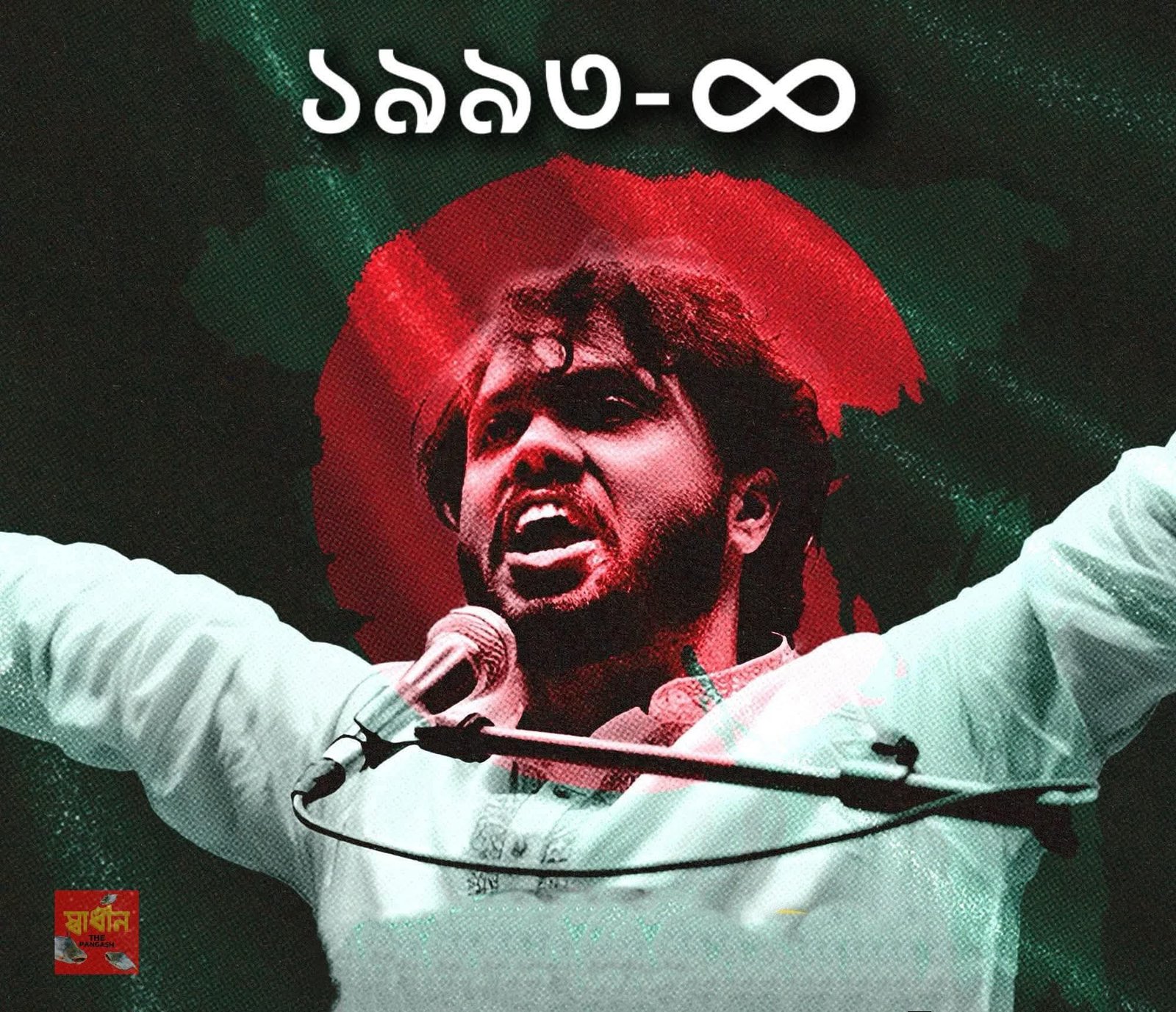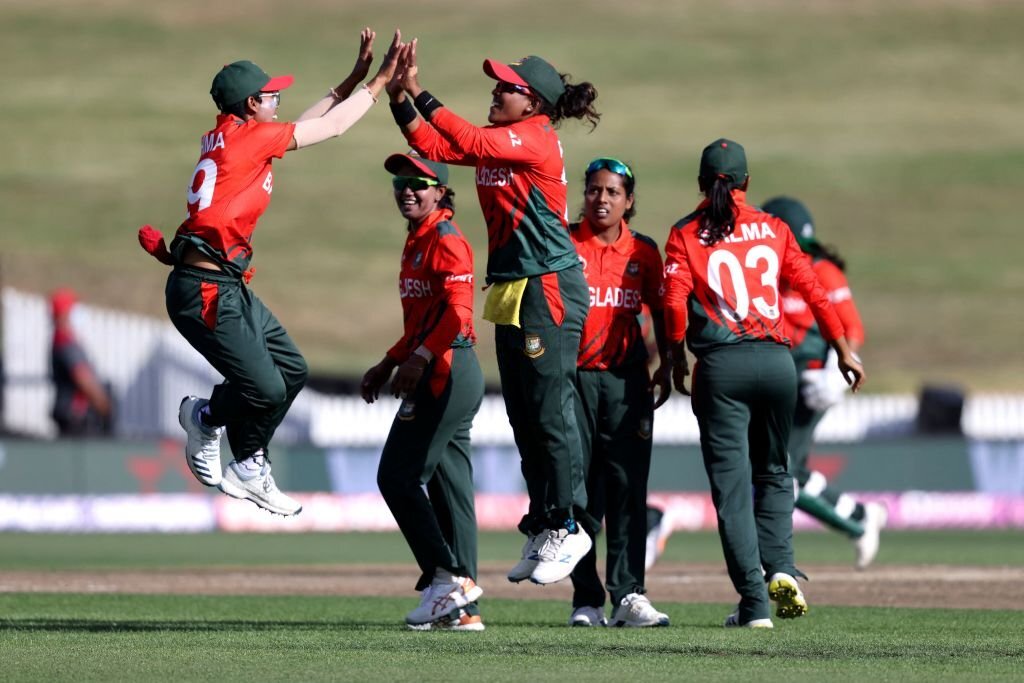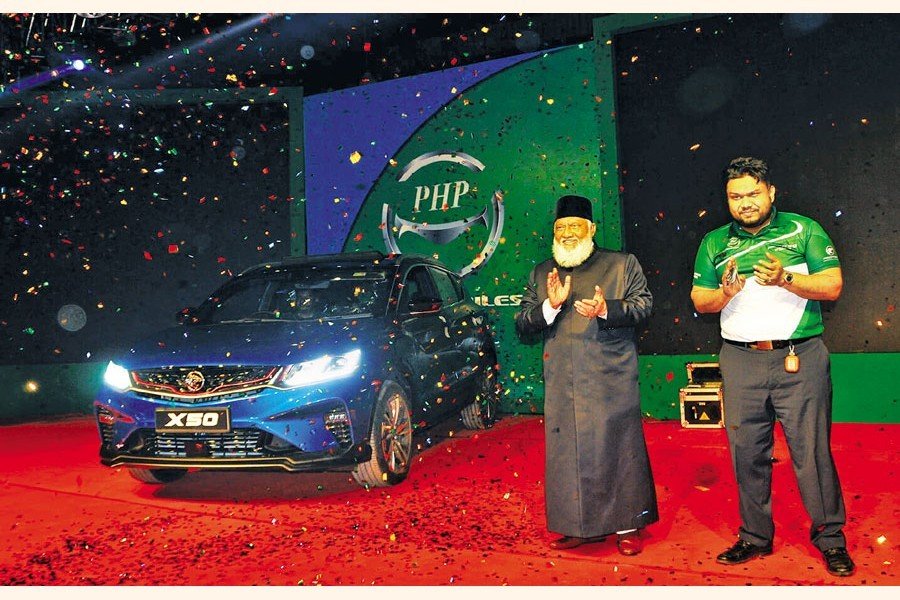How E-commerce Is Transforming the Qurbani Cattle Market in Urban Bangladesh
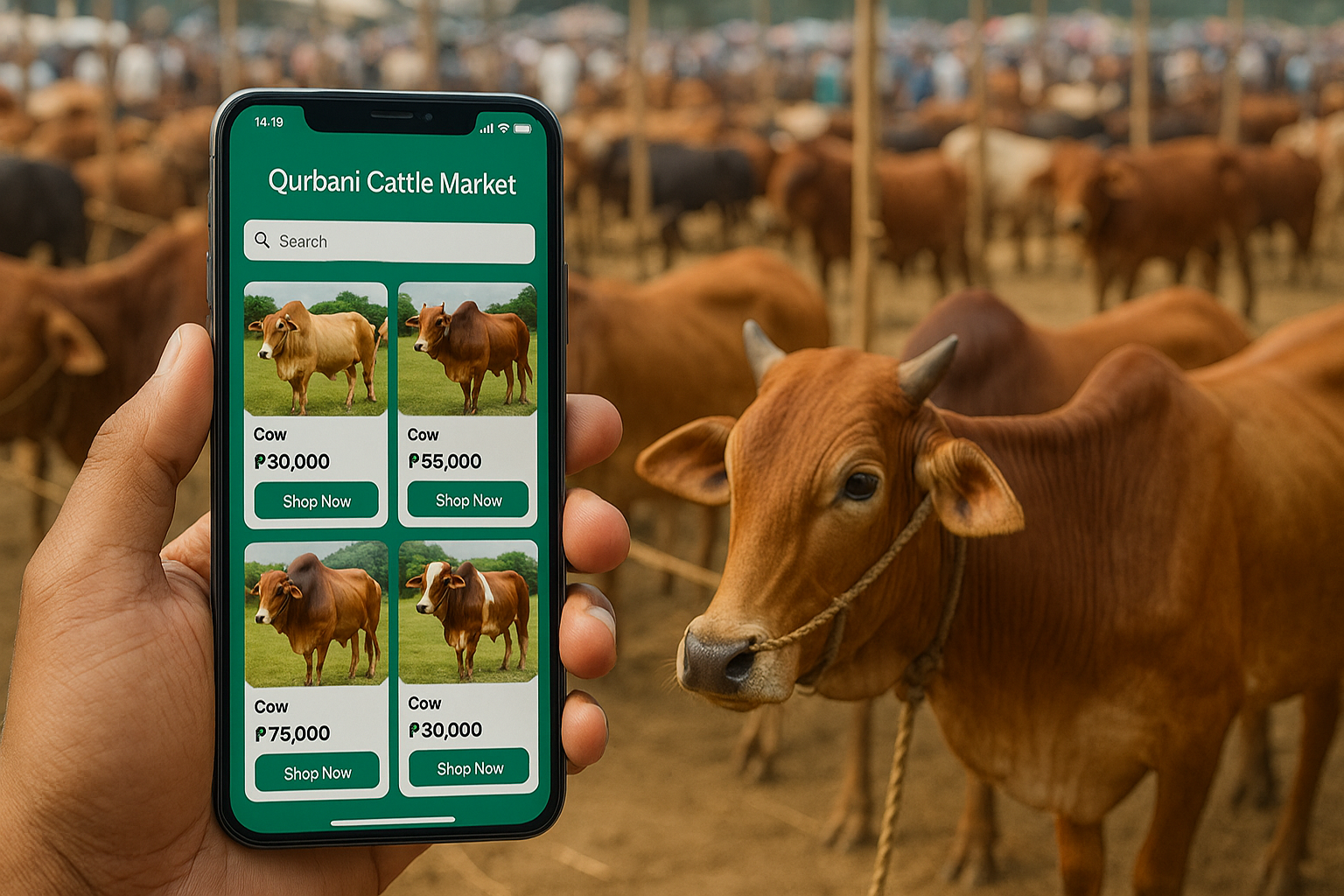
From Haat to Home: How E-commerce Is Revolutionizing Qurbani in Urban Bangladesh
Eid-ul-Adha, also known as the Festival of Sacrifice, is one of the most significant religious celebrations for Muslims around the world. In Bangladesh, this occasion is marked by the ritual slaughtering of animals, most commonly cows and goats, in remembrance of Prophet Ibrahim’s willingness to sacrifice his son for God. Traditionally, this involves visiting crowded cattle markets—known locally as haats—where people select animals after careful physical inspection, bargaining, and interaction with traders. However, in the bustling urban landscapes of cities like Dhaka, Chattogram, and Sylhet, this age-old tradition is being reshaped by the rise of e-commerce.
In recent years, especially since the COVID-19 pandemic, the Qurbani cattle market in urban Bangladesh has undergone a remarkable digital transformation. Online platforms, mobile apps, and social media marketplaces have entered the scene, offering urban consumers an entirely new way to participate in the Qurbani ritual—one that promises safety, convenience, and transparency. This shift reflects not just a change in buying behavior, but also a broader transformation in how faith, commerce, and technology intersect in contemporary Bangladesh.
The Cultural Significance and Challenges of Traditional Haat Shopping
For decades, buying a sacrificial animal from a local haat was more than just a transaction—it was a cultural event. Families would visit cattle markets days before Eid, often with children in tow, to inspect animals, negotiate prices, and even seek advice from local butchers or veterinary professionals. The experience of touching, feeding, and choosing a Qurbani animal in person had spiritual and emotional value. It also provided a unique sense of participation in the religious ritual.
However, this traditional model is not without its limitations—especially in rapidly urbanizing environments. The seasonal cattle haats in cities often lead to severe traffic congestion, sanitation issues, and a lack of proper facilities for animal care. Moreover, price manipulation by middlemen, inconsistent animal quality, and lack of proper documentation regarding the animal’s health or origin make the experience less than ideal for many urban consumers. As cities expand and the population becomes more time-constrained and digitally connected, many people—particularly the younger and middle-class urbanites—have begun to explore alternative solutions.
The Rise of E-commerce and Digital Livestock Platforms in Bangladesh
Bangladesh’s digital landscape has evolved significantly over the last decade. With more than 130 million mobile subscribers and over 65 million active internet users, the country has seen a rapid increase in e-commerce activities. This boom has been further fueled by the widespread adoption of digital payment platforms like bKash, Nagad, Rocket, and mobile banking apps, which allow for secure and convenient transactions.
The concept of online Qurbani emerged in response to this growing digital ecosystem, but it truly gained traction during the COVID-19 pandemic. With lockdown restrictions in place and fears of virus transmission at crowded cattle markets, city corporations and private enterprises collaborated to introduce safe, contactless alternatives. Platforms like Digital Haat (run by the Dhaka North City Corporation in partnership with e-CAB), Shwapno, iFarmer, Sheba.xyz, Khamar-e, and Bengal Meat began offering services ranging from online cattle selection to home delivery of processed meat.
These platforms allow customers to browse a wide variety of sacrificial animals, view detailed information such as breed, age, weight, and health status, and complete the purchase from the comfort of their homes. Some even offer video consultations or live viewing of the animals, while others go a step further by managing the entire Qurbani process—from slaughtering to hygienic meat packaging and doorstep delivery.
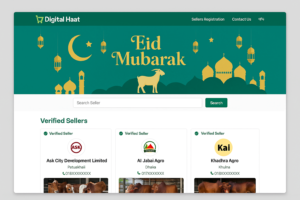
Reinventing the Consumer Experience
What makes the online Qurbani model so appealing to urban consumers is its ability to solve many of the practical and logistical challenges of traditional cattle buying. Firstly, it offers unmatched convenience. For those who live in apartment complexes, have limited transport options, or work long hours, visiting a cattle haat during the chaotic days before Eid can be overwhelming. E-commerce platforms eliminate that need by allowing users to place orders using mobile apps or websites, often within minutes.
Secondly, these platforms have introduced a level of transparency and trust that is often missing in traditional markets. Photos and videos of the cattle, along with clear descriptions and verified seller profiles, reduce the uncertainty involved in animal selection. Many sellers now provide veterinary health certificates, halal assurance, and proof of vaccination, which reassures buyers about the quality and safety of the animal. Customers can filter cattle by breed, price range, or location, making the process more personalized and efficient.
Additionally, online platforms have simplified the payment process. Consumers can choose to pay in full or in installments, often using secure digital wallets. During the Eid season, many e-commerce sites also offer discounts, cashback, or promotional offers in partnership with mobile financial services, making the deals even more attractive.
A major innovation that has further increased adoption is the full-service Qurbani package. These packages include slaughtering at a certified facility, professional meat processing, hygienic packaging, and same-day or next-day home delivery. This is especially useful for nuclear families, elderly individuals, or expatriates who want to perform the religious obligation remotely or without the mess and hassle of managing a slaughter at home.

Empowering Farmers and Bridging the Rural-Urban Divide
While urban consumers benefit greatly from the digital Qurbani revolution, rural farmers are also seeing important changes. Traditionally, these farmers relied on intermediaries and livestock traders to transport and sell their animals at urban haats. These middlemen often took a significant cut of the profits, and farmers were frequently left with marginal returns after investing months in raising healthy cattle.
Now, platforms like iFarmer and Khamar-e are helping to remove these middle layers by connecting rural farmers directly to urban consumers through digital marketplaces. These services not only list the animals online but also offer support in terms of vaccination, feeding schedules, health monitoring, and financial training. Farmers can earn more by reaching a wider customer base while receiving expert guidance to improve their livestock practices.
However, challenges remain. Digital literacy is still low in many rural areas, and not all farmers have access to smartphones or high-speed internet. To address this, some startups are launching training initiatives and field agent networks to onboard and assist rural sellers. With continued investment in digital inclusion, this farmer-to-consumer model has the potential to become a powerful engine of rural economic development.
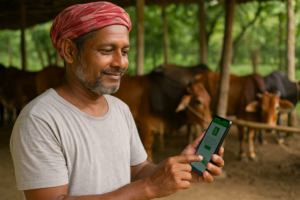
Government Involvement and Policy Support
The success of the online Qurbani market is also tied to policy support and collaboration from government authorities. The Dhaka North City Corporation’s Digital Haat initiative is a prime example. Launched in partnership with the ICT Division, a2i, and the e-Commerce Association of Bangladesh (e-CAB), the platform brought together multiple verified sellers under one digital roof, offering a reliable and secure platform for consumers.
Digital Haat registered over 10,000 online cattle sales in 2023 alone, helping to reduce crowding in physical markets and improve city sanitation during Eid. The platform ensured that all listed animals had proper documentation and health certifications, and it created a feedback mechanism for customer reviews and dispute resolution. Such public-private partnerships demonstrate how digital transformation can be both commercially successful and socially responsible.
The government is also encouraging the use of centralized slaughterhouses in cities, particularly to prevent unhygienic and illegal roadside slaughtering. Online Qurbani platforms that use these certified facilities help enforce these regulations, ensuring that the ritual is performed in line with both religious and public health guidelines.

Challenges and Growing Pains
Despite its growing popularity, the digital Qurbani market still faces some hurdles. One of the biggest concerns is consumer trust. The collapse of some high-profile platforms, such as Evaly, due to mismanagement and fraud, has made many people skeptical of online cattle buying. Although other platforms are working to rebuild trust through transparency and customer service, the e-commerce sector needs stronger regulation and enforcement to ensure that consumers are protected.
Logistics is another pain point. Delivering large animals, especially in congested urban areas, is no small feat. The sudden surge in demand during the Eid period puts pressure on delivery teams, cold storage units, and slaughtering facilities. Delays, miscommunication, and occasional mix-ups still occur, particularly when platforms overpromise and underdeliver.
In addition, a portion of the population—especially older generations—remains culturally attached to the traditional haat experience. For them, selecting a Qurbani animal in person is part of the religious ritual. Online buying, despite its convenience, can feel emotionally detached or less authentic. Some e-commerce providers are now experimenting with hybrid models where buyers can book animals online but visit physical hubs for final inspection before purchase.
The Road Ahead: A Hybrid Future
Looking forward, the Qurbani cattle market in Bangladesh is likely to evolve into a more hybrid model that combines the best of both worlds. E-commerce platforms are already exploring new technologies to enhance the online experience. Augmented Reality (AR) and Virtual Reality (VR) tools could allow customers to view animals in immersive 3D environments. Blockchain technology may soon be used to trace an animal’s health and feeding history from farm to fork. AI-driven recommendation systems can suggest the best cattle based on consumer preferences, past orders, or budget.
Moreover, as infrastructure for last-mile delivery, cold chains, and slaughterhouse facilities improves, the online Qurbani market is expected to become more efficient, inclusive, and scalable. With government regulation and consumer education, these platforms can become permanent fixtures of Eid-ul-Adha, not just emergency solutions during a pandemic.
What This Means for the Future
E-commerce has brought a quiet but profound transformation to the Qurbani cattle market in urban Bangladesh. What began as a pandemic-era necessity has evolved into a modern solution that offers convenience, transparency, and empowerment for both consumers and farmers. While the tradition of Qurbani remains deeply rooted in faith and community, its execution is being reshaped by technology, driven by a new generation of digitally savvy Bangladeshis.
As this trend continues, it opens up opportunities not only for business growth but also for rural inclusion, environmental regulation, and public health. Whether through full-service Qurbani packages, farmer-to-doorstep supply chains, or smart cattle-matching algorithms, the future of Qurbani in Bangladesh is not just digital—it’s dynamic, inclusive, and deeply connected to the needs of a modern society.
Curious how Bangladesh’s rural innovation goes beyond Qurbani? Discover how Panchabrihi, a rice revolution, is transforming the future of farming: Panchabrihi – A Rice Revolution Securing Bangladesh’s Future


